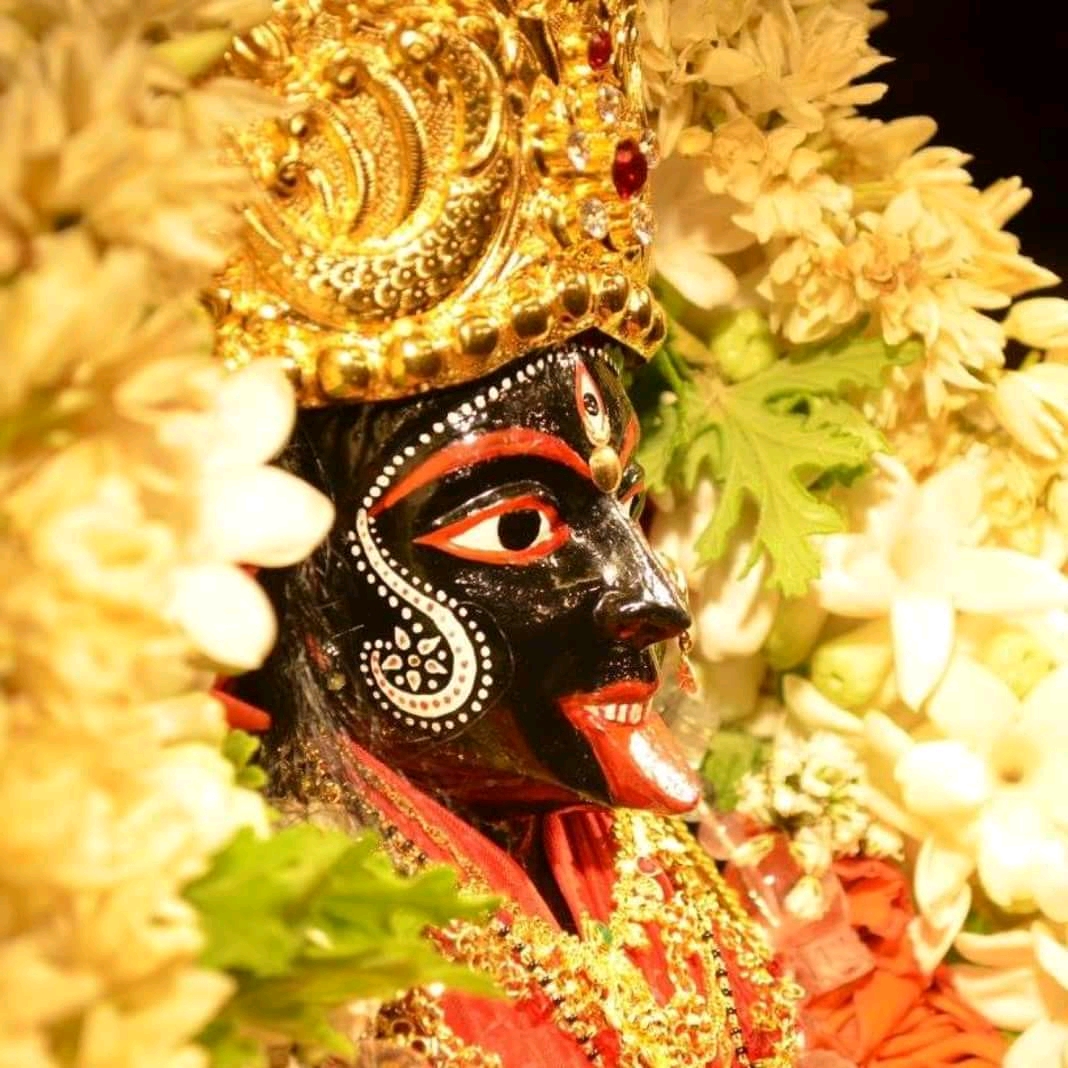Why Bengalis Celebrate Kali Puja When India Celebrates Diwali? Soon after the Durga Puja celebrations, Bengal prepares for the arrival of the deity of mind, body, and soul. But why does Bengal celebrate Kali Puja (worship of the goddess Kali), while India celebrates Diwali (the festival of lights)?
Every year, Kali Puja is celebrated on the new moon day of the Hindu month of Kartik (October-November). Its cult is important in Bengal, Assam, and Odisha. Coinciding with Diwali, it is a ritual for Bengalis, Assamese, and Oriyas alike.

Who is Kali?
The word Kali is said to have first appeared in the Atharva Veda between 1200 and 1000 BC, and Kali is believed to come from the word kala , meaning time. With her name mentioned in the Vedas (Hindu religious texts), she represents the darkness of Agni. David Frawley describes her as a personification of the feminine aspect of the fire sacrifice. Her sacrificial aspect is evident in the garland of skulls she wears.
It is often said that the goddess Kali is the most misunderstood of Hindu gods and goddesses. Her depiction seems strange and brutal to someone seeing her for the first time. She is seen standing with one foot placed on the chest of the god Shiva, her tongue hanging out, but she is also considered the mother of the universe, she is also called Shyama ma, Adya ma or Tara ma, among others.
In her early depictions, Kali was often associated with violent endeavours on the battlefields of the gods. In the legendary battle with the demon Raktabija, each drop of her blood manifested as a clone of the demon himself, becoming a vast army. Kali defeated the demon and proceeded to devour his clones.
She then began a terrible victory dance, and the world began to tremble. No one could stop her frenzy because she was too intoxicated to listen. All the deities, desperate, turned to Shiva to stop her. Shiva lay on the ground, pretending to be a corpse. Kali finally stepped on Shiva's chest and, shocked and embarrassed, bit her tongue.
Despite her appearance and nickname as the goddess of death, she is believed to eliminate ego, narcissism, and self-centeredness. She is considered the mother of her devotees. Ramakrishna Paramahansa, Bamkhepa, and Prahlad Chandra Brahmachari were among her faithful worshippers, devoting their lives to the goddess.
Kali is also believed to have developed a parallel interest in tantrism. In tantric meditation, Kali's dual nature leads practitioners to simultaneously face the beauty of life and the reality of death, understanding that one cannot exist without the other.
According to Nrisingha Prasad Bhaduri, an Indian scholar and specialist in Indian epics and Puranas (classical texts), the image of destruction attached to Kali comes from her relationship with tantric rituals, but she is also the mother of all.
We know her as Dakkhina Kali, whom we call our mother. The word dakkhina itself means auspicious and there is a notion of taming in her.

About Kali Puja
Kali Puja was introduced in Bengal around the 16th century. A scholar named Raghunandana in the 16th century spoke about the worship of Goddess Lakshmi and Kuber on Deepanwita Amavasya, which is the day Kali Puja is celebrated today.
Many people believe that it was Krishnananda Agamavagishawas, a tantric scholar, who introduced this worship in Bengal.
The worship of Goddess Lakshmi and God Kuber, deities of wealth and fortune who occupy an important place at Diwali, merged with the worship of Goddess Kali.
Deepanwita Amavasya is, originally, the worship of Goddess Lakshmi. And this was the case until the 16th century in Bengal. It was in 1768 that a scholar named Kashinath developed the worship of Goddess Kali on the same day.
She may be a bloodthirsty tribal deity, a goddess of esoteric tribal origin, the mother of pious poets living through the political and social upheavals of 18th-century Bengal, or the terrible mother of universal feminine strength and rage, but in all cases, by her very versatility, Kali expresses a transformative power (shakti).
Her diverse forms and representations of Kali in different parts of the Indian subcontinent reflect how her character has developed and blended with local traditions and Hindu symbolism. The different ways in which the goddess Kali is described and celebrated across the country are numerous and will continue to be so.
The Barasat, Barrackpore, Naihati and Madhyamgram regions of North 24 Parganas are renowned for their majestic pandals, lighting and idols. Durga Puja of Kolkata is often said to be synonymous with Kali Puja of Barasat.
The pandals also house images of Kali's consort Shiva, two Bengali devotees of Kali named Ramakrishna and Bamakhepa, and mythical scenes involving Kali and her various forms, including images of the Mahavidyas, sometimes considered the ten Kalis. The Mahavidyas are a group of ten tantric goddesses led by Kali.
A recent custom incorporated the drinking of wine. In the Kalighat Temple in Kolkata, the Kalikhetra Temple in Bhubaneswar and the Kamakhya Temple in Guwahati, Kali is worshipped as Lakshmi on this day to reflect an essence of the Vaishnava Haldars on Kali worship.
It is on this day that the goddess Lakshmi is worshipped in her three forms, Maha Lakshmi, Maha Kali and Maha Saraswati. The temple is visited by thousands of devotees who make offerings to the goddess.
Although the annual Kali Puja celebration, or Dipanwita Kali Puja, takes place during the new moon of the month of Kartika, Kali is also worshipped on other new moon days. Ratanti Kali Puja, Phalaharini Kali Puja and Kaushiki Kali Puja are related celebrations.
Kaushiki Kali Puja is associated with the goddess Tara of Tarapith, while Ratanti puja is celebrated on Magha Krishna Chaturdashi and Phalaharini puja on Jyeshta Amavashya of the Bengali calendar.
Phalaharini Kali Puja holds special significance in the lives of saint Ramakrishna and his wife Sarada Devi, as on this day in 1872, Ramakrishna worshipped Sarada Devi as the goddess Shodashi.








